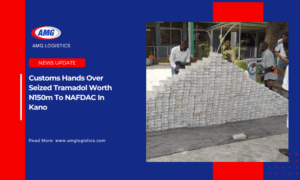In anticipation of the long-awaited disbursement of the Cabotage Vessel Financing Fund (CVFF), findings by Shipping Position Daily have revealed that some individual indigenous ship owners as well as associations have begun to form mergers and consortiums to strengthen their financial eligibility.
This is even as the maritime sector looks forward to a crucial stakeholders’ meeting scheduled for today (Monday, 12th May, 2025) where the Nigerian Maritime Administration and Safety Agency (NIMASA) is expected to provide clarity on disbursement guidelines.
The President of the Nigerian Indigenous Shipowners Association (NISA), Otunba Sola Adewumi, confirmed last week that merger discussions are underway, while noting that individuals with the capacity to meet the 15 percent equity requirement are free to pursue the fund independently.
Adewumi stressed that the most crucial factor at the moment remains the guidelines for accessing the fund, which NIMASA is expected to clarify during the stakeholders’ meeting.
The NISA President stressed that the guidelines ought to have been made available to local maritime operators ahead of time to promote transparency and enable adequate preparation.
In his words: “There will be mergers. Individuals that have the capacity can go ahead and apply alone; that is the position of our association. The most important thing is the guidelines, which I believe NIMASA wants to probably discuss with stakeholders at the meeting coming up in the next few days.
“NIMASA has said that it is not a lending agent, and that is the essence of having the Primary Lending Institutions (PLIs). If we are to go by the former status quo, it is the banks that will assess the prospective borrower and confirm his or her ability to pay back. Once the ability to pay back is confirmed, then they will recommend to NIMASA, and NIMASA will approve the disbursement of the money” he said.
When contacted, the Chairman of the CVFF Committee of NISA, Dr. Edward Sowho affirmed that NISA is actively participating in the CVFF disbursement process through its investment arm, NISA Ocean Transport Ltd.
Dr Sowho disclosed that all financial members of the association have come together as shareholders in the newly-formed entity, which is being positioned to benefit from the fund when disbursement eventually begins.
“NISA has NISA Ocean Transport Ltd, and we are going in. Now, that does not stop individual members if you can afford it, or a group of members from also going in. Every financial member of NISA is a shareholder in NISA Ocean Transport.” he noted.
The ship owner also confirmed that the long-anticipated stakeholder meeting organized by the Nigerian Maritime Administration and Safety Agency is scheduled to hold on Monday, May 12, where the CVFF guidelines are expected to be addressed.
However, he expressed cautious optimism about the meeting stating that “It’s a stakeholder meeting, people will discuss. They may provide additional information on the guidelines, but I don’t see them saying anything new; even if they read the guidelines,” he noted.
On his part, another shipowner, Otunba Sola Olatunji emphasized that, while mergers and acquisitions in the maritime sector are both legitimate and expected, especially in capital-intensive sectors like shipping, the noise around funding disbursement is misleading without concrete action or clarity.
However, Olatunji expressed strong reservations over ongoing discussions surrounding CVFF disbursement, calling attention to the lack of clearly defined banking processes or identified financial institutions involved in the release of such funds.
Olatunji also highlighted the structural challenges many indigenous shipping companies face. According to him, due to the long dormancy in Nigeria’s shipping sector, many firms lack the required 15% equity contribution needed to access large-scale funding like the proposed $25 million facility.
“Shipping is a highly capital-intensive business. The acquisition of vessels requires significant funding, and naturally, this leads to mergers among shipping companies. That’s standard business practice.
“I don’t know where this term ‘disbursement’ even came from. By definition, disbursement means the actual release of funds—but we’ve not seen any money move. No guidelines have been finalized, no banks have been announced, and yet we keep hearing about disbursement.”
He questioned the legitimacy of the conversations being pushed, suggesting that they could be part of a political script similar to past administrations’ unfulfilled promises.
“Until there’s actual engagement with banks and real financial commitments, this remains at best a political distraction. You can’t disburse funds that haven’t gone through proper loan processing. If someone says they’re disbursing, they need to show where the money is and who’s managing it.
“The fund may look promising on paper, but if most companies cannot meet equity requirements, the conversation remains academic,” Olatunji argued.





